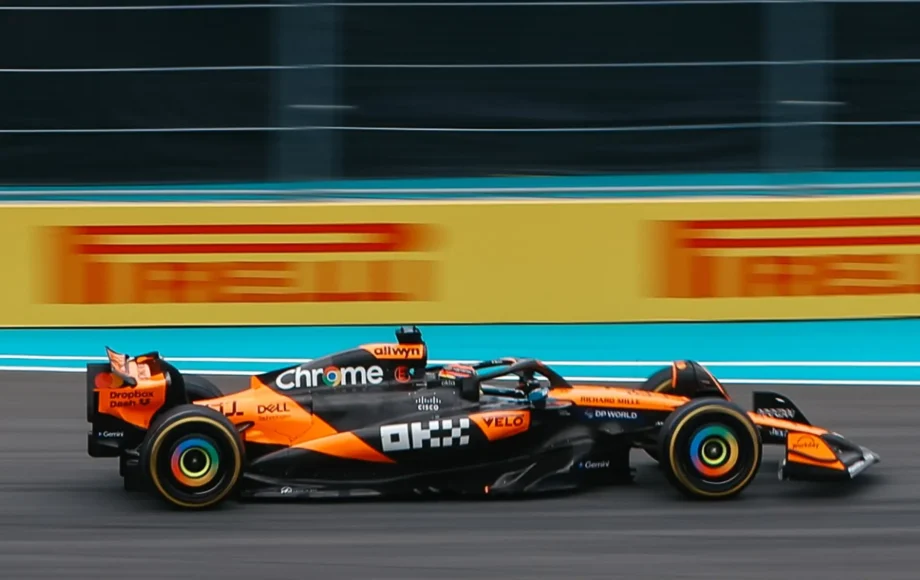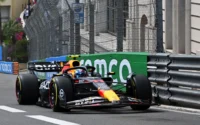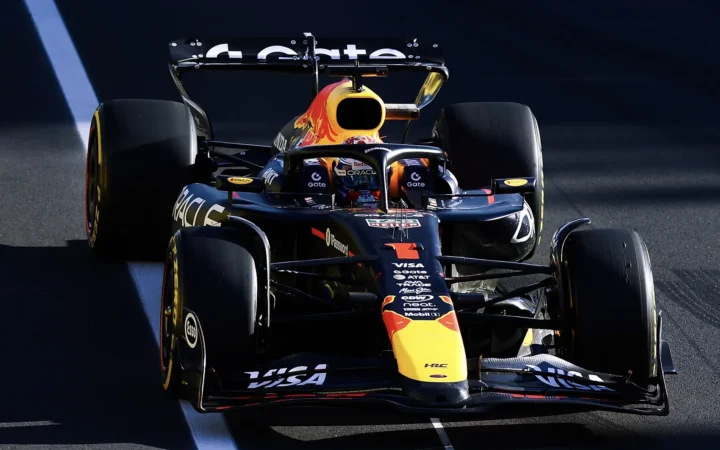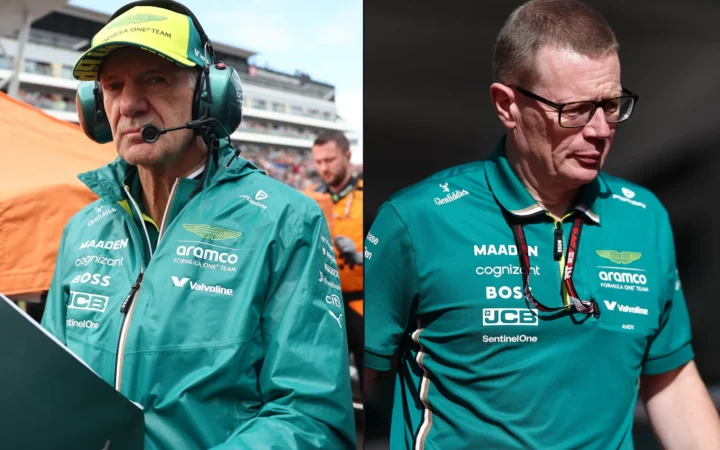For many motorsport fans, speed isn’t just a feature of the sport—it’s the whole thrill. It’s what changes watching a strategic race into something that delivers a serious adrenaline hit, where every straight and corner tests the car’s and driver’s limits. Formula 1, known as the pinnacle of motorsports, offers that in spades.
What To Know?
- F1 cars reach up to 372.5 km/h, with 0–100 km/h in 2.6s, and dominate through corners and lap times.
- IndyCar holds the fastest circuit speeds, hitting 380 km/h on ovals with lower downforce setups.
- MotoGP bikes top out at 366 km/h, with rapid acceleration but slower lap times than F1.
- WEC Hypercars hit 343 km/h, balancing top speed with endurance and hybrid reliability across 24-hour races.
While the drama of team tactics and edge-of-your-seat overtakes draws fans to every Grand Prix weekend, the sheer speed of an F1 car blasting down a straight has captured the hearts of motorsport fans since the first race in 1950. The sounds and the unfathomable speed at which corners are taken are the heartbeat of Formula 1.
Top speeds in motorsport can vary dramatically from one series to another, shaped by factors like engine output, aerodynamic efficiency, technology and the rules. But raw performance isn’t the only variable—driver skill plays a huge role too, especially when it comes to late braking and high-speed cornering.
Then there’s the track itself. Each circuit poses a unique challenge, from the relentless straights of Le Mans in WEC to the tight, twisting layout of Monaco in F1. Compare that to the oval speed of the Indy 500 or the punishing terrain of the Dakar Rally, and you start to see just how much the environment influences the racing.
With so many variables in play, where does Formula 1 stand in the world of speed? How fast do F1 cars go? Let’s take a closer look.
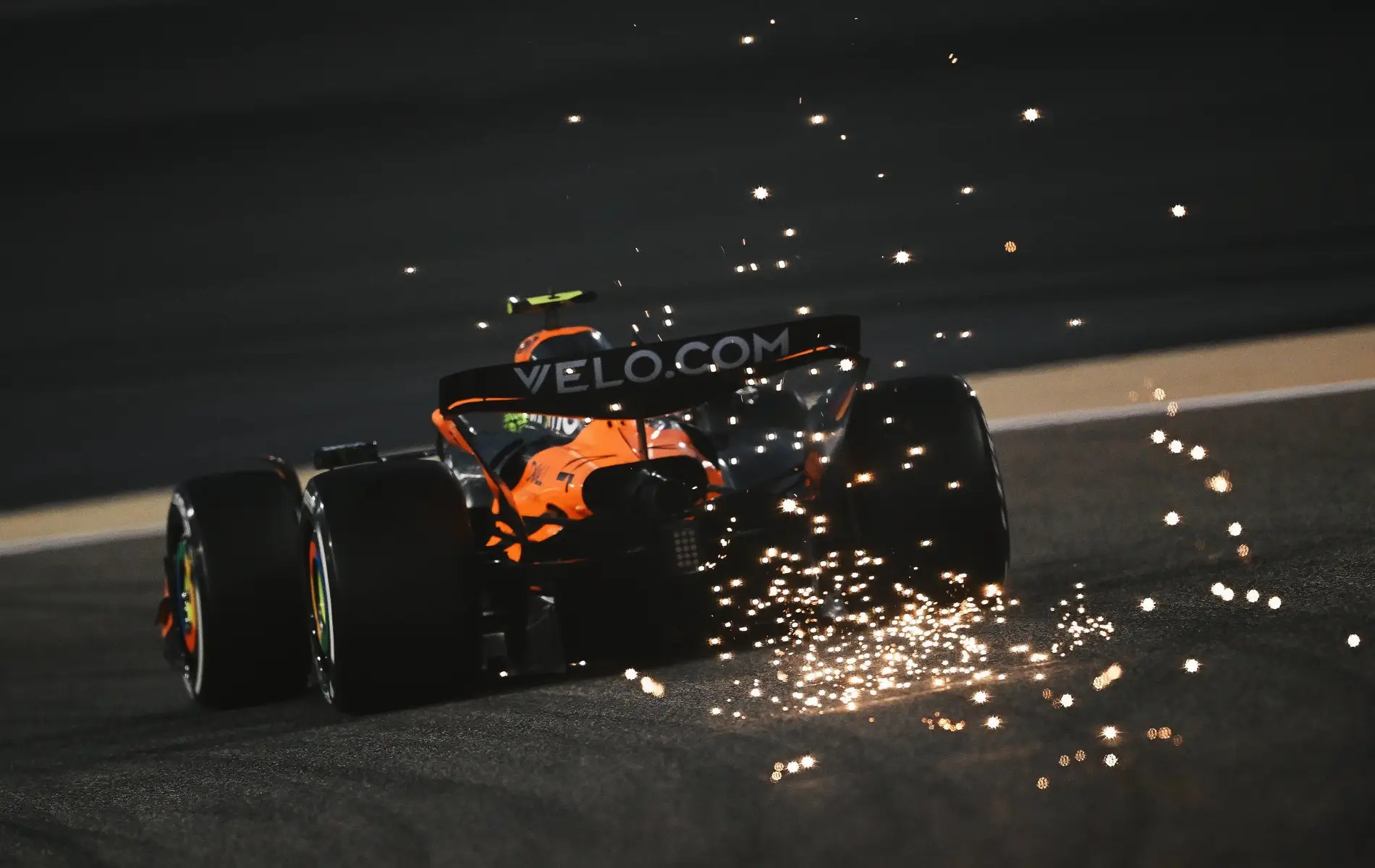
Formula 1
How Fast Do F1 Cars Really Go?
Top Speed: 372.5km/h / 231.4mph
Fastest Ever Speed: 397.36km/h (246.9mph)
Acceleration: 0-60mph – approximately 2.6s
Formula 1 cars are among the fastest machines on four wheels—not just because of how quickly they go in a straight line, but because of how consistently they maintain speed through corners, under braking, and across an entire lap. Their acceleration is ferocious, hitting 0–60 mph in around 2.6 seconds, but it’s the top-end figures that truly grab attention.
In terms of outright speed during a Grand Prix, the benchmark is 372.5 km/h (231.4 mph), set by Valtteri Bottas during the 2016 Mexican GP. Interestingly, that same year, he also hit 378 km/h (234.9 mph) during qualifying in Baku, making it one of the fastest moments ever recorded under typical race weekend conditions. More recently, in the 2024 season, Franco Colapinto topped the speed charts with Williams with a run of 356.4 km/h (221.4 mph) during qualifying for the 2024 Las Vegas Grand Prix.
Mexico City’s Autódromo Hermanos Rodríguez has long been a hotspot for high-speed figures. Located 7,500 feet above sea level, the thinner air significantly reduces aerodynamic drag, giving teams the opportunity to clock some of the highest trap speeds on the calendar. Combine that altitude with the circuit’s massive 1.2-kilometre straight, and it’s easy to see why Mexico often delivers the most eye-catching speed data.
Despite these impressive numbers, F1 cars aren’t technically the fastest single-seaters in terms of raw top speed. That title usually belongs to IndyCar, which can eclipse F1 on long ovals due to lower downforce setups and more power dedicated to straight-line performance. However, what F1 lacks in terminal velocity, it more than makes up for with cornering speed and lap-time efficiency.
To illustrate, both series have raced at the Circuit of the Americas. In 2019, IndyCar’s pole lap was a 1:46.018 with an average speed of 186.349 km/h. In contrast, F1’s pole time—also by Bottas in 2019—was a blistering 1:32.029, averaging 206.374 km/h over the same layout. The difference reflects F1’s strength: overall speed through a combination of advanced aerodynamics, tire grip, and driver precision.
And while race speeds cap out around 372 km/h, the fastest speed ever achieved by an F1 car is even more extreme. In a special project, Honda took their RA106 to the Bonneville Salt Flats in the U.S. in an attempt to crack 400 km/h. Although they fell just short, they still reached an astonishing 397.36 km/h (246.9 mph)—the highest verified speed ever set by an F1 car under any conditions.
Formula 2
How Fast Are Formula 2 Cars?
Top Speed: 335km/h / 208mph
Acceleration: 0-100km/h in 2.9s
Formula 2 acts as the final proving ground before drivers graduate to Formula 1—and while the cars are deliberately less complex, they’re still capable of impressive performance. With top speeds reaching up to 335 km/h (208 mph) in low-drag setups like Monza (with DRS activated), F2 cars are no slouch. Acceleration from 0 to 100 km/h comes in at approximately 2.9 seconds, with 0 to 200 km/h arriving in around 6.6 seconds.
The performance gap between F1 and F2 becomes more apparent when you see the two side-by-side on the same track. At the 2023 Spanish Grand Prix weekend, Max Verstappen’s F1 pole lap came in at 1:12.272. By comparison, Oliver Bearman secured the F2 pole with a 1:23.546—roughly 11 seconds off the pace. That differential highlights the technical divide between the two categories, with F1’s advanced aerodynamics, hybrid power units, and ultra-refined setup making a substantial impact.
A 3.4-litre powers F2 cars turbocharged V6 Mecachrome engine, delivering consistent and competitive output across the field. Unlike F1, where teams design and develop their own chassis and aerodynamic packages, Formula 2 uses a standardised Dallara chassis and Pirelli tyres, keeping the emphasis squarely on driver ability rather than engineering advantage.
As a development series, F2 prioritises close racing, controlled costs, and learning opportunities. But even within that framework, the speed on offer is formidable, and when conditions align, an F2 car on a long straight with DRS open can come startlingly close to early-era F1 speeds.
Formula 3
How Fast Are Formula 3 Cars?
Top Speed: 300km/h / 186mph
Acceleration: 0-100km/h in 3.1s
Formula 3 sits two steps below Formula 1 on the single-seater ladder, but it still delivers serious performance. F3 cars can reach top speeds of up to 300 km/h (186 mph) in low-drag setups, while sprinting from 0 to 100 km/h in approximately 3.1 seconds. Acceleration to 200 km/h takes around 7.8 seconds—still quicker than most road-legal supercars, underscoring just how fast these junior machines really are.
While F3 cars are clearly a step down from F2 and F1 in terms of outright pace, they are necessary in the driver development pathway. At the 2023 Spanish Grand Prix weekend, for instance, Pepe Martí set pole position in F3 with a lap time of 1:27.587. That’s more than 15 seconds slower than Max Verstappen’s F1 pole time of 1:12.272 on the same circuit—but entirely expected given the car design and purpose.
F3 machinery is built around accessibility and equal opportunity. The cars use a 3.4-litre, six-cylinder Mecachrome engine producing around 380 horsepower. With a standardised Dallara chassis, Pirelli tyres, and tightly controlled regulations, Formula 3 focuses on driver development and close competition rather than chasing lap records or top-speed milestones.
The result is a category that consistently delivers tight, wheel-to-wheel racing while preparing the next generation of stars for the more complex and demanding environments of F2 and F1. Even though they’re the slowest cars in the Formula ladder, F3 cars offer a vital balance of performance and learning, while still hitting triple-digit speeds that would humble most performance cars on the road.
Formula E
How Fast Is Formula E?
Top Speed: 322km/h / 200mph estimated
Acceleration: 0-100km/h in 2.8s
Formula E might not match the top speeds of Formula 1 or IndyCar, but it plays an entirely different game—one focused on innovation, sustainability, and pushing the limits of electric performance in real-world urban environments. The current Gen3 Evo car boasts a theoretical top speed of 322 km/h (200 mph), though in race trim, accounting for aerodynamic drag and typical circuit conditions, the figure is closer to 280 km/h (175 mph).
That might sound modest compared to the blistering straights of Monza or Indianapolis, but it’s important to remember that Formula E races almost exclusively on tight, twisty street circuits—where top-end speed is less relevant than agility, torque delivery, and energy efficiency. These tracks are designed to challenge drivers in confined, real-world settings, not to showcase flat-out speed.
Acceleration, on the other hand, is a strong suit. The Gen3 Evo can launch from 0 to 100 km/h in just 2.8 seconds, putting it in the same bracket as F1 and MotoGP in terms of off-the-line performance. This instantaneous torque is a hallmark of electric racing and makes for thrilling starts and sharp, responsive exits from low-speed corners.
In terms of race pace, the series is improving year by year. The 2023 Cape Town E-Prix set new benchmarks for Formula E, with an average race speed of 132.2 km/h—even with safety car and full-course yellow interruptions. During qualifying, Sacha Fenestraz set the fastest lap in series history, averaging 155 km/h on his pole run.
Formula E is less about chasing ultimate speed and more about redefining what high-performance racing can look like in a sustainable future. It’s a category where battery management, regenerative braking, and strategic use of power delivery create a unique and rapidly evolving motorsport experience.
IndyCars
How Fast Are IndyCars?
Top Speed: 380km/h / 236mph
Acceleration: 0-100km/h in approximately 3s
IndyCars stand right at the top of the single-seater world for raw straight-line speed. With top speeds pushing 380 km/h (236 mph), these cars are among the fastest in motorsport. While their acceleration from 0–100 km/h clocks in around 3 seconds—slightly slower than a Formula 1 car—IndyCars make up for it with astonishing speed on long straights, especially on the vast oval circuits that characterise much of the series.
IndyCar’s most eye-watering speeds are typically reached on superspeedways like the Indianapolis Motor Speedway. These high-speed tracks allow the cars to run ultra-low downforce configurations, reducing drag and unlocking their full top-end potential. In 2023, Alex Palou secured the legendary Indy 500 pole with a blistering four-lap average of 234.217 mph (376.936 km/h). However, the all-time qualifying record remains untouched since 1996, when Arie Luyendyk set a staggering 236.986 mph (381.391 km/h) average. This achievement still stands as the fastest four-lap pole in motorsport history.
On street and road circuits, IndyCars adopt higher-downforce setups for better grip and handling in tight corners, but that comes at the expense of top speed. The contrast is striking: at Mid-Ohio in 2023, Colton Herta’s pole lap averaged just 197.288 km/h—a figure far below the numbers seen on the ovals. It’s a reminder of how dramatically setup and circuit type influence performance in the series.
Unlike Formula 1, which prioritises overall lap time through aerodynamics and cornering, IndyCar adopts versatility. It’s a series that requires cars to be competitive across a variety of circuits—from flat-out ovals to narrow, technical road courses. And while they may not match F1 cars for lap time, the raw speed in a straight line means IndyCar machines are unmatched.
MotoGP
How Fast Is MotoGP?
Top Speed: 366.1km/h / 227.4mph
Acceleration: 0-100 km/h in approximately 2.6s
MotoGP may run on two wheels, but in terms of speed, it holds its own against the world’s fastest racing machines. In 2023, Brad Binder set a new benchmark for the top speed ever recorded in the series, clocking an astonishing 366.1 km/h (227.4 mph) during the Italian Grand Prix sprint race at Mugello. That edged out the previous record of 363.6 km/h set by Jorge Martin at the same venue just a year earlier—highlighting Mugello’s reputation as MotoGP’s ultimate speed trap.
Acceleration off the line is also blistering. MotoGP bikes can launch from 0 to 100 km/h in roughly 2.6 seconds, matching Formula 1 in the early phase of power delivery. But the time to reach extreme velocities is a different story—while an F1 car can hit 300 km/h in well under 10 seconds, a MotoGP bike typically takes around 11.8 seconds to reach that same mark from a standstill.
The raw figures tell part of the story, but so do the lap times. Despite their incredible top speeds, MotoGP machines can’t match the cornering stability and aerodynamic grip of an F1 car. At the 2023 Austrian Grand Prix, for example, Max Verstappen took pole at the Red Bull Ring with a time of 1:04.391—over 24 seconds quicker than MotoGP polesitter Francesco Bagnaia’s 1:28.539. Even on relatively short, flowing circuits, the sheer downforce advantage of an F1 car creates a massive performance gap.
Still, MotoGP remains a spectacle of raw rider skill, bravery, and mechanical edge. Compared to Moto2 and Moto3, which top out at around 295 km/h and 245 km/h respectively, MotoGP’s elite class represents the absolute cutting edge of motorcycle racing—and it’s only getting faster.
NASCAR
How Fast Are NASCAR Stock Cars?
Top Speed: just over 321km/h / 199mph
Acceleration: 0-96km/h in 3.4s
NASCAR might not chase top speed records like some other series, but it delivers its own brand of high-speed power, rooted in close-quarters racing and tactical drafting rather than outright speed. The top speed of a modern NASCAR Cup Series car hovers just over 321 km/h (199 mph), with acceleration from 0 to 96 km/h (60 mph) taking around 3.4 seconds—slower than both F1 and IndyCar machines.
That performance gap is intentional. Since the 1980s, NASCAR has enforced strict measures to cap top speeds as a safety precaution, after a series of high-speed crashes led to serious injuries and dangerous debris incidents. Aerodynamic restrictor plates (now replaced by tapered spacers), spoiler adjustments, and car weight regulations all contribute to keeping speeds in check, particularly at superspeedways like Daytona and Talladega.
Even with these constraints, the racing is anything but slow. In the 2023 Daytona 500, Jimmie Johnson topped the event’s speed chart at 312.57 km/h (194.2 mph), with the race averaging a pace of 233.81 km/h (145.3 mph). While those numbers trail far behind what you’d see in IndyCar or Formula 1, the difference lies in the style of competition: NASCAR races often feature massive packs of cars running nose-to-tail at high speed, with aerodynamic slipstreaming playing a critical role.
NASCAR cars are also significantly heavier and less aerodynamically refined than their open-wheel counterparts, which affects both acceleration and cornering capability. But what they lack in raw performance, they make up for in spectacle—especially when 40 cars are charging side-by-side at nearly 200 mph with only inches between them.
DTM
How Fast Is DTM?
Top Speed: 302km/h / 187mph approx.
Acceleration: 0-100km/h in 3s approx
The Deutsche Tourenwagen Masters—better known as DTM—is one of Europe’s premier touring car championships, combining high-performance machinery with the close, door-to-door racing that defines the category. While not as fast as open-wheel series, DTM cars still pack serious pace. In recent years, top speeds have pushed just beyond 300 km/h (187 mph), with acceleration from 0 to 100 km/h clocking in at around 3 seconds.
A major leap in performance came with the introduction of the “Class One” regulations in 2019, which aligned DTM with Japan’s Super GT series. This brought a shift from naturally aspirated V8 engines to more efficient and powerful two-litre, four-cylinder turbocharged units—raising top speeds from around 270 km/h to over 300 km/h and making the 2020 cars the fastest in DTM’s history.
Despite these improvements, DTM machinery is still significantly slower than Formula 1. To illustrate the gap, Robin Frijns secured pole for the 2020 season opener at Spa-Francorchamps with a time of 2:05.625 in his Audi—compared to Lewis Hamilton’s F1 pole time of 1:41.252 at the same track that year. The nearly 25-second difference reflects not just power disparity but also the added weight, reduced aerodynamics, and mechanical grip limitations that come with touring car design.
Still, the appeal of DTM isn’t in chasing F1 numbers. It lies in the competitive parity, fierce racing, and the visual drama of powerful, production-based silhouettes pushing the limits on some of Europe’s most iconic circuits. With a calendar that visits legendary venues like the Nürburgring, Hockenheim, and Spa, DTM continues to deliver a unique blend of speed and spectacle—just with a slightly different emphasis than open-wheel racing.
WTCR
How Fast Is WTCR?
Top Speed: 260km/h / 161mph approx.
Acceleration: 0-100km/h in 4.5s
The World Touring Car Cup (WTCR), formerly the World Touring Car Championship, represents the top tier of global touring car competition under TCR regulations. These cars are fundamentally different from single-seaters or prototypes—they’re based on high-production road cars and are designed to keep costs contained while delivering competitive, close-quarters racing. That design philosophy is reflected in their performance figures: top speeds hover around 260 km/h (161 mph), and acceleration from 0 to 100 km/h takes approximately 4.5 seconds.
WTCR cars are powered by 2.0-litre turbocharged engines capped at around 360 bhp (365 hp). With Balance of Performance (BoP) measures in place to ensure parity across manufacturers, the emphasis is on driver skill, strategy, and racecraft rather than pure pace. The result is consistently tight racing—often with entire grids separated by just a few tenths of a second in qualifying.
Because WTCR cars are fundamentally modified road vehicles, there’s a substantial gap in performance compared to top-tier series like Formula 1. For instance, in 2020, Esteban Guerrieri secured pole at a wet Hungaroring with a time of 2:05.705 and an average speed of 125.5 km/h. For reference, when F1 held a similarly wet qualifying session at the same circuit, Lewis Hamilton took pole with a 1:35.658—demonstrating the sheer performance delta, even when both categories are dealing with challenging track conditions.
But outright speed isn’t WTCR’s goal. Its focus lies in offering accessible, thrilling touring car racing on a global stage, with recognisable vehicles, frequent wheel-to-wheel battles, and technical regulations designed to keep the field as level as possible.
WRC
How Fast Is WRC?
Top Speed: 200km/h / 124mph approx.
Acceleration: environment dependent
The World Rally Championship (WRC) offers a completely different kind of speed challenge. While its cars may not match the blistering top speeds of circuit-based series, the environments in which they operate make their performance no less impressive. Modern WRC cars can reach top speeds of around 200 km/h (124 mph), but the real story lies in how and where they achieve it—on gravel, snow, tarmac, and everything in between.
Acceleration figures in rallying are highly dependent on surface conditions. A WRC car might rocket off the line on dry tarmac but will need a completely different approach on icy Swedish roads or dusty Sardinian trails. Still, their all-wheel-drive systems, aggressive turbocharged engines, and cutting-edge suspension allow them to accelerate with shocking pace even on low-grip surfaces.
In 2017, the FIA had to cancel a stage of Rally Sweden after concerns were raised over cars being too fast. Ott Tänak completed Stage 9 at an average of 137.84 km/h (85.65 mph), surpassing the FIA’s safety threshold of 130 km/h (80.78 mph) for that event. While these numbers might seem modest next to F1 or IndyCar, the context is everything—rally drivers are threading their cars between trees, rocks, and snowbanks at high speed with only pace notes and a co-driver to guide them.
The fastest event on record came at Rally Finland in 2016, where Kris Meeke set a new benchmark for average speed over an entire rally: 126.62 km/h (78.68 mph) in his Citroën DS3 WRC. On flowing gravel stages with high-speed jumps and blind corners, that level of commitment is as much about bravery as it is about outright speed.
Ultimately, comparing rally cars to circuit racers is like comparing fighter jets to aerobatic planes—they both fly, but the disciplines are worlds apart. In WRC, it’s not just how fast you go, but how fast you go when the surface is fighting back.
V8 Supercars
How Fast Are V8 Supercars?
Top Speed: 300km/h / 186mph approx.
The Supercars Championship—formerly known as V8 Supercars—is Australia’s premier touring car series, showcasing high-powered, production-based machines built for endurance, aggression, and spectacle. While not as fast as open-wheel categories, these cars still push serious speeds. On long straights like Conrod Straight at Mount Panorama, top speeds regularly reach around 300 km/h (186 mph), putting them on par with series like DTM and just below Formula 2.
The cars are strictly regulated: front-engined, rear-wheel drive, four-door sedans or coupes derived from road-going models. In 2023, the grid featured only Ford Mustang GTs and Chevrolet Camaros—both heavily modified for racing under a strict set of technical guidelines to ensure parity and close competition.
The crown jewel of the Supercars calendar is the Bathurst 1000, a gruelling 1,000 km race at the legendary Mount Panorama Circuit. The track is both narrow and unforgiving, winding through elevation changes and tight corners before unleashing cars down the 1.9-kilometre Conrod Straight. In 2023, James Golding broke the lap record with a stunning 1:59.838, eclipsing Scott McLaughlin’s 2019 benchmark of 2:03.378—which had already averaged 181.29 km/h (112.65 mph) across the 6.213 km circuit.
While Supercars may lack the cutting-edge aerodynamics or lightning-fast acceleration of Formula 1, they deliver an entirely different brand of motorsport: high-speed racing on diverse tracks, including temporary street circuits, permanent road courses, and iconic endurance layouts. With thunderous V8 power, aggressive mechanical grip, and a tightly controlled rulebook, the series remains one of the most competitive and entertaining in the world.
WEC
How Fast Is WEC?
Top speed: 343km/h / 213mph approx. (Hypercar)
The World Endurance Championship (WEC) is where engineering endurance meets high-speed performance over hours—or even days—of racing. Since 2021, the series’ top class has been the Hypercar category, replacing the extreme, speed-focused LMP1 era with a new formula that emphasises hybrid technology, manufacturer relevance, and sustainability, while still delivering elite performance.
Top speeds in the Hypercar class now reach around 343 km/h (213 mph), as demonstrated by Ferrari‘s return to the front row of endurance racing. At the 2023 Le Mans 24 Hours, Antonio Fuoco’s pole-setting run for Ferrari not only delivered a 3:22.982 lap around the 13.626 km Circuit de La Sarthe, but also clocked a top speed of 343.2 km/h—proving that despite tighter regulations, hypercars remain immensely fast.
However, for pure speed, the LMP1 era still holds the edge. The all-time lap record at Le Mans was set by Kamui Kobayashi in 2017 with a 3:14.791 in Toyota’s TS050 HYBRID, averaging a staggering 251.9 km/h. And during the same era, Rebellion Racing’s Bruno Senna was clocked at a staggering 347.8 km/h—a top-end figure that’s rarely seen outside of IndyCar or F1 speed traps.
It’s not just the top class that impresses. LMP2 cars regularly reach over 330 km/h, with Nicholas Foster hitting 338.1 km/h in 2020. Even the GTE Pro and Am categories—based on modified road-going sports cars—are no slouches: Alexander Lynn recorded 305.6 km/h for Aston MartinAston Martin in GTE Pro, while Giancarlo Fisichella clocked 303.9 km/h for AF Corse in GTE Am.
While WEC cars generally don’t match F1 in terms of acceleration or cornering speeds, their top speeds are surprisingly competitive, especially when you consider they’re designed to run for 24 hours, not 90 minutes. In the world of endurance racing, outright speed is just one piece of the puzzle; efficiency, reliability, and multi-class strategy are just as critical to success.
Seen in:

